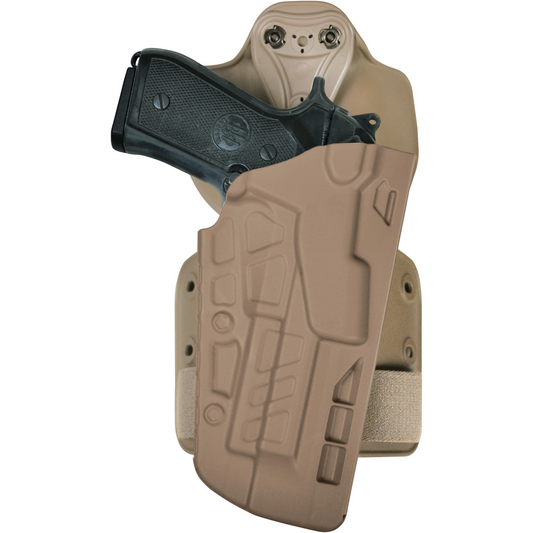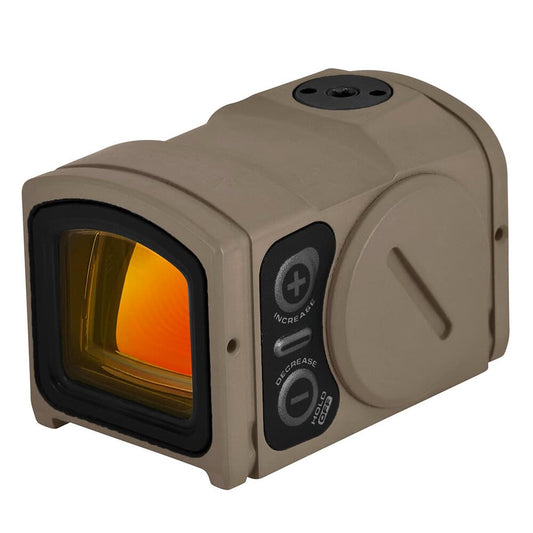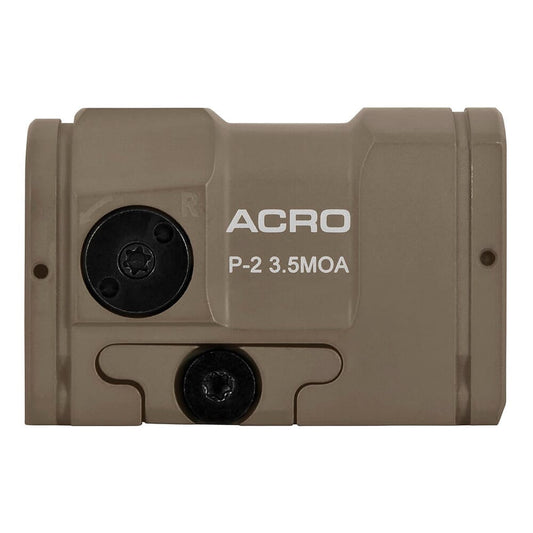

MIL-KIT 7TS ALS Military Kit for Sig Sauer P226 provides versatile carrying options for tactical scenarios. This comprehensive kit includes the 7384 Tactical Holster, which mounts securely to a Single Strap Leg Shroud and features a 568BL Paddle for easy attachment and removal. With the Injection Molded Belt Loop and adjustable nylon shoulder harness, this kit adapts to multiple carry styles, ensuring that your gear remains accessible and secure. The MOLLE Locking Fork allows for chest mounting, providing further customization based on mission requirements.
Designed with a Quick Locking System Receiver Plate (QLS 22), transitioning between platforms is seamless and efficient. This kit is compatible with various Sig Sauer models, including the P220, P226, P220R, P226R, P226R MK25, and P227 R3, making it an excellent choice for operators looking to optimize their equipment setup for maximum effectiveness.
Features:
- VERSATILE CARRYING OPTIONS for adaptable mission setups.
- SECURE MOUNTING SYSTEM ensures stability during movement.
- QUICK TRANSITION between platforms with the QLS 22.
- ADJUSTABLE NYLON SHOULDER HARNESS for comfort and fit.
- COMPATIBLE with multiple Sig Sauer models for flexibility.
- MOLLE LOCKING FORK allows for chest mount customization.
- INJECTION MOLDED CONSTRUCTION for durability and weather resistance.
- USER-FRIENDLY DESIGN facilitates rapid access to your firearm.
Technical Specifications Table
| Feature | Details |
|---|---|
| Gun Fit | Sig Sauer P220, P226, P220R, P226R, P226R MK25, P227 R3 |
| Holster Model | 7384 Tactical Holster |
| Leg Shroud | Single Strap |
| Belt Loop | 567BL Injection Molded |
| MOLLE Locking Fork | MLS 16 |
| Quick Locking System | QLS 22 |
| Material | Polymer |
| Weight | Lightweight for ease of carry |
What's in the Box?
- 7384 Tactical Holster
- Single Strap Leg Shroud
- 567BL Injection Molded Belt Loop
- Adjustable Nylon Shoulder Harness
- MOLLE Locking Fork (MLS 16)
- Quick Locking System Receiver Plate (QLS 22)
Customer Reviews
“The MIL-KIT is durable and allows me to switch setups quickly, which is essential during operations.”
“Comfortable to wear for extended periods and keeps my firearm secure.”
“I appreciate the versatility of this kit; it adapts well to different situations.”
FAQ
How does the MIL-KIT enhance my tactical setup? The MIL-KIT allows for multiple carrying options, enabling users to adjust their gear based on mission needs. The quick transition between different mounting systems ensures that your firearm is always within reach.
Is the material of the holster durable? Yes, the MIL-KIT is constructed from high-quality injection-molded polymer, providing excellent durability and weather resistance for various environments.
Can this kit accommodate other firearms? While specifically designed for Sig Sauer models, it may fit other firearms with similar dimensions. However, it is recommended to check compatibility before purchase to ensure proper fit.
Similar Models
Explore additional tactical gear to complement your setup. Check out the MIL-KIT 7TS ALS Military Kit for other firearm models or browse our complete collection of holsters and tactical accessories for enhanced performance.
You May Also Like
Here’s some of our most similar products people are buying. Click to discover trending style.








